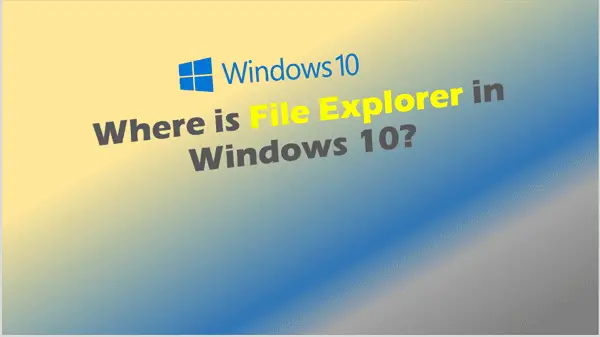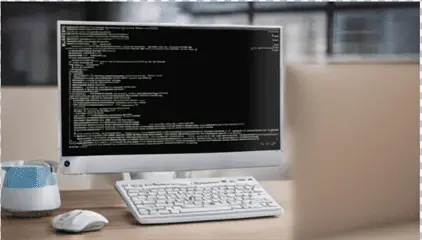How to Change Directories in Command Prompt: A Comprehensive Guide for IT Users
Learn how to change directories in Command Prompt like a pro. Master essential CMD navigation techniques and boost your IT skills. Click for expert tips!
Introduction
In the vast digital landscape of modern computing, mastering the Command Prompt is like unlocking a hidden superpower for IT professionals. At the heart of this text-based interface lies a fundamental skill: navigating through directories. Whether you’re a seasoned system administrator or an aspiring tech enthusiast, understanding how to change directories in Command Prompt is crucial for efficient file management, troubleshooting, and executing complex tasks.
This guide will take you on a journey through the ins and outs of directory navigation in Command Prompt, empowering you with the knowledge to seamlessly traverse your system’s file structure. From basic commands to advanced techniques, we’ll explore everything you need to know about changing directories, using both absolute and relative paths, and leveraging powerful shortcuts to boost your productivity.
So, fire up your Command Prompt, and let’s embark on this adventure to master the art of directory navigation!
Understanding Command Prompt
Before we dive into the specifics of changing directories, let’s take a moment to appreciate the power and versatility of Command Prompt.
What is Command Prompt?
Command Prompt, often abbreviated as CMD, is a command-line interpreter application available in most Windows operating systems. It’s a powerful tool that allows users to interact with their computer using text-based commands, offering a level of control and efficiency that graphical interfaces often can’t match.
Why Use Command Prompt?
While graphical user interfaces (GUIs) are user-friendly, Command Prompt offers several advantages:
- Speed: Executing commands is often faster than navigating through multiple menus.
- Automation: Complex tasks can be automated using batch scripts.
- Troubleshooting: Many advanced diagnostic and repair tools are accessible via Command Prompt.
- Resource Efficiency: It uses minimal system resources compared to graphical applications.
Basic Command Prompt Navigation
When you open Command Prompt, you’ll see a window with a blinking cursor, typically showing your current directory path. This is your starting point for navigating the file system.

The ‘cd’ Command: Your Gateway to Directory Navigation
The cornerstone of changing directories in Command Prompt is the cd command, which stands for “change directory.” This simple yet powerful command is your key to navigating through the file system with ease.
Basic Syntax of the ‘cd’ Command
The basic syntax for using the cd command is:
cd [path]Where [path] is the directory you want to navigate to.
Navigating to a Specific Directory
To change to a specific directory, simply type cd followed by the path. For example:
cd C:\Users\YourUsername\DocumentsThis command will take you directly to the Documents folder of the specified user.
Moving Up One Level
To move up one directory level, use two dots:
cd ..This command is particularly useful when you need to backtrack or navigate to a parent directory.
Returning to the Root Directory
To quickly return to the root directory of the current drive, use:
cd \This command will take you to the top-level directory of your current drive.
Changing Drives
If you need to switch to a different drive, simply type the drive letter followed by a colon:
D:This will switch you to the D drive. After changing drives, you can use cd commands to navigate within that drive.

Mastering Absolute and Relative Paths
Understanding the difference between absolute and relative paths is crucial for efficient directory navigation in Command Prompt.
Absolute Paths
An absolute path provides the complete route to a directory from the root of the file system. It always starts with the drive letter. For example:
cd C:\Program Files\Microsoft OfficeAbsolute paths are useful when you need to navigate to a specific location regardless of your current directory.
Relative Paths
Relative paths describe the location of a directory in relation to your current position in the file system. They don’t start with a drive letter. For example:
cd Documents\ProjectsThis command will navigate to the “Projects” folder inside the “Documents” directory, assuming you’re currently in a parent directory of “Documents.”
Using Wildcards in Paths
Command Prompt supports the use of wildcards in file and directory names, which can be incredibly useful for navigation:
*represents any number of characters?represents a single character
For example:
cd C:\Users\*\DocumentsThis command will navigate to the Documents folder of the first user account it finds.

Advanced Directory Navigation Techniques
Now that we’ve covered the basics, let’s explore some advanced techniques to enhance your directory navigation skills in Command Prompt.
Tab Completion
One of the most time-saving features in Command Prompt is tab completion. Start typing a directory name and press the Tab key. Command Prompt will automatically complete the name if it’s unique, or cycle through options if there are multiple matches.
Using the ‘pushd’ and ‘popd’ Commands
The pushd and popd commands allow you to save and recall directory locations:
pushd [path]: Saves the current directory and moves to the specified directorypopd: Returns to the most recently saved directory
This is particularly useful when you need to temporarily switch to another directory and then quickly return to your original location.
Navigating to the User Profile Directory
To quickly navigate to the current user’s profile directory, use:
cd %USERPROFILE%This environment variable always points to the current user’s profile folder.
Opening File Explorer from Command Prompt
Sometimes, you might want to visualize the directory structure. You can open File Explorer for the current directory by typing:
start .This command opens File Explorer in the current Command Prompt directory.
Troubleshooting Common Navigation Issues
Even experienced IT users can encounter issues when navigating directories in Command Prompt. Let’s address some common problems and their solutions.
“The system cannot find the path specified”
This error usually occurs when you’ve typed an incorrect path or when the directory doesn’t exist. Double-check your spelling and ensure the directory exists.
Long File Names or Paths with Spaces
If a directory name contains spaces, enclose the entire path in quotation marks:
cd "C:\Program Files\Directory with Spaces"‘ipconfig’ is Not Recognized
While not directly related to changing directories, this is a common issue in Command Prompt. If you encounter this error, it likely means the system PATH is not set correctly. To fix this:
- Right-click on ‘This PC’ or ‘My Computer’
- Select ‘Properties’
- Click on ‘Advanced system settings’
- Click ‘Environment Variables’
- Under ‘System variables’, find and edit ‘Path’
- Add the directory containing ipconfig.exe (usually C:\Windows\System32)
Dealing with Access Denied Errors
If you encounter “Access Denied” errors when trying to navigate to certain directories, you may need to run Command Prompt as an administrator:
- Right-click on the Command Prompt icon
- Select ‘Run as administrator’
Enhancing Productivity with Command Prompt Shortcuts
Mastering these shortcuts can significantly speed up your work in Command Prompt:
- Ctrl + C: Abort the current command
- Ctrl + V or right-click: Paste text (in Windows 10 and later)
- F7: Display command history
- Alt + F7: Clear command history
- F3: Repeat the last command
- Arrow Up/Down: Cycle through command history
Integrating Command Prompt with Other Tools
Using ‘ping’ in Command Prompt
While not directly related to changing directories, the ping command is a valuable tool for network diagnostics. To use it:
ping google.comThis command sends test packets to the specified address and measures the response time.
Combining Directory Navigation with Other Commands
You can combine directory navigation with other commands using the & symbol. For example:
cd C:\Users & dirThis command changes to the C:\Users directory and then lists its contents.
Key Takeaways
- The
cdcommand is your primary tool for changing directories in Command Prompt. - Understanding absolute and relative paths is crucial for efficient navigation.
- Use
cd ..to move up one directory level andcd \to return to the root directory. - Tab completion can save time when typing long directory names.
- The
pushdandpopdcommands allow you to save and recall directory locations. - Always enclose paths with spaces in quotation marks.
- Run Command Prompt as administrator to access restricted directories.
- Combine directory navigation with other commands using the
&symbol for more efficient operations.
FAQ
- Q: How do I view the contents of a directory in Command Prompt?
A: Use thedircommand to list the contents of the current directory. - Q: Can I create a new directory using Command Prompt?
A: Yes, use themkdircommand followed by the new directory name. For example:mkdir NewFolder - Q: How can I quickly return to my home directory?
A: Use the commandcd %USERPROFILE%to navigate to your user profile directory. - Q: Is there a way to open File Explorer from Command Prompt?
A: Yes, use the commandstart .to open File Explorer in the current directory. - Q: How do I change to a directory with a space in its name?
A: Enclose the entire path in quotation marks. For example:cd "C:\Program Files\Directory Name" - Q: Can I use environment variables in directory paths?
A: Yes, you can use environment variables like %USERPROFILE% or %APPDATA% in your paths. - Q: How do I find the current directory I’m in?
A: Simply typecdwithout any arguments to display your current directory path. - Q: Is there a limit to how deep I can navigate into subdirectories?
A: While there’s no specific limit to directory depth, Windows has a maximum path length of 260 characters by default. - Q: How can I navigate to a network location using Command Prompt?
A: Use the UNC path, for example:cd \\ServerName\ShareName - Q: Can I use wildcards when changing directories?
A: Yes, you can use wildcards like * and ? in directory names. For example:cd C:\Users\*\Documents
By mastering these techniques for changing directories in Command Prompt, you’ll be well-equipped to navigate your file system with ease and efficiency. Whether you’re managing servers, troubleshooting network issues, or simply organizing your files, these skills will prove invaluable in your IT career. Remember, practice makes perfect, so don’t hesitate to open up Command Prompt and start exploring!
Posts Related to How to Change Directories in Command Prompt:
More Information:






